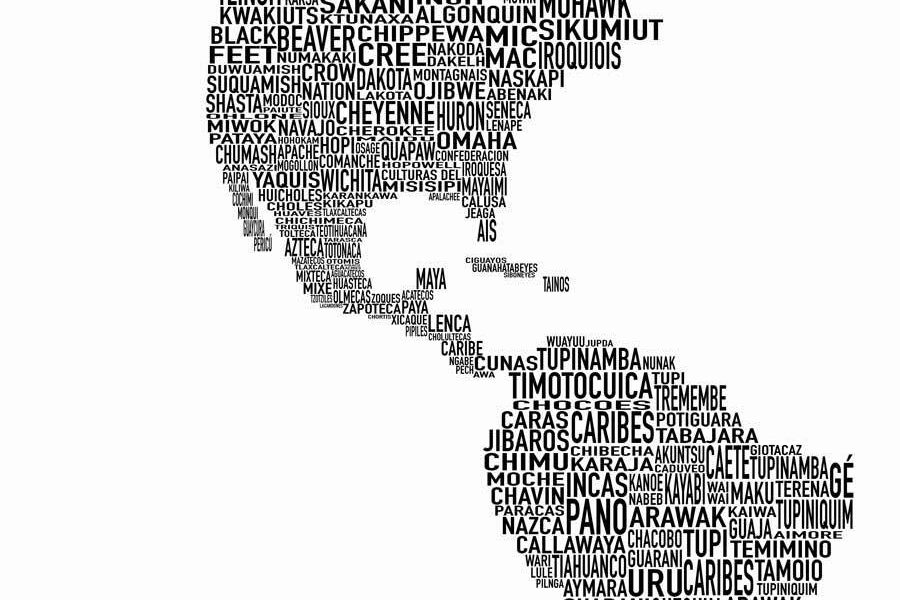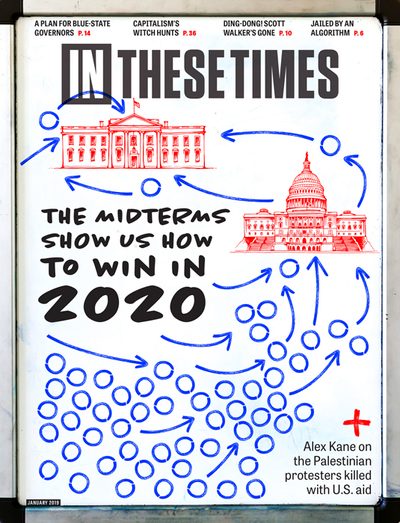These Mexican Artists Are Transforming Weapons Into Instruments
Prominent Mexican Artists Carla Fernández and Pedro Reyes address gun violence and ways to sustain Indigenous culture in their collaborative exhibit.
Dirce Toca

Two of Mexico’s most prominent artists, Carla Fernández and Pedro Reyes, have created a joint exhibit to promote social change in Mexico. Double Agents includes a 15-foot-tall banner map of the First Nations of the Americas, which showcases names of Indigenous peoples who have inhabited North and South America in the past 11,000 years.
The exhibit also includes individual projects from the artists. Fernández’s gallery features mannequins wearing clothing handmade by Indigenous artisans in collaboration with her fashion label. Reyes’ gallery is filled with gun remnants from the Mexican Army that have been transformed into musical instruments. In These Times spoke with the artists about their first collaboration.
What was the idea behind the map of First Nations?
REYES: It was important for us to bring some perspective in a time where xenophobia and racism are increasing, and where, looking ahead, we are going to have ever-increasing migration. We want to show that many of these Indigenous cultures continue to exist, and that — compared to these original settlers — we are all immigrants.
What do you find most important for people to take away from these guns-turned-instruments?
REYES: Living in a gun-free society ought to be a human right. Almost 40% of the world’s firearms are in the hands of civilians in the United States. In order to fix the problem of gun violence in Mexico, you have to hack the kind of gun availability in the United States. [Using an iPad, visitors] can suggest rewrites of the Second Amendment, which is the Achilles’ heel of the NRA.
How do you see fashion as an agent for social change?
FERNÁNDEZ: We believe the future is handmade. Our team travels throughout Mexico visiting communities of artisans that specialize in handmade textiles, utilizing centuries-old Indigenous techniques. This labor-intensive approach is helping to sustain long-standing traditions.
Plus, we want to find an equilibrium between rural and urban areas, so people don’t need to move away from their homes. We work closely with the artisans. They become partners and are compensated fairly.





